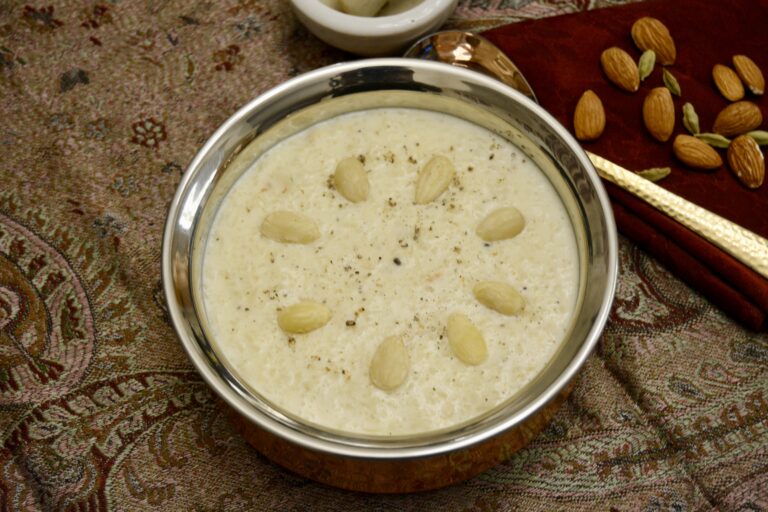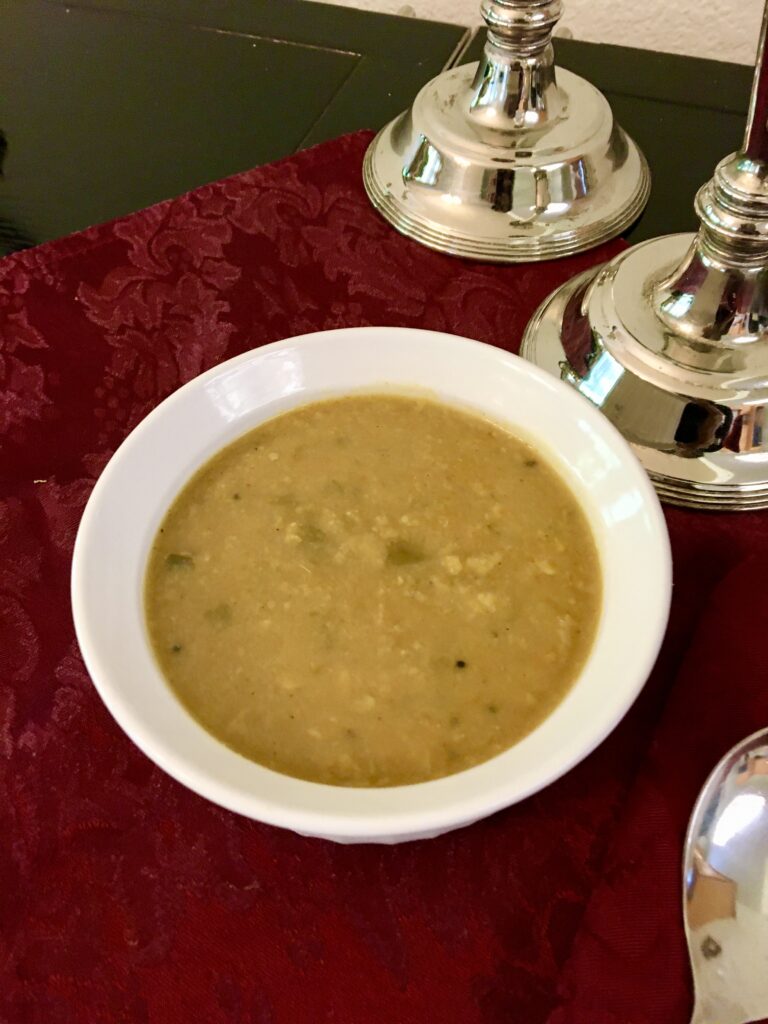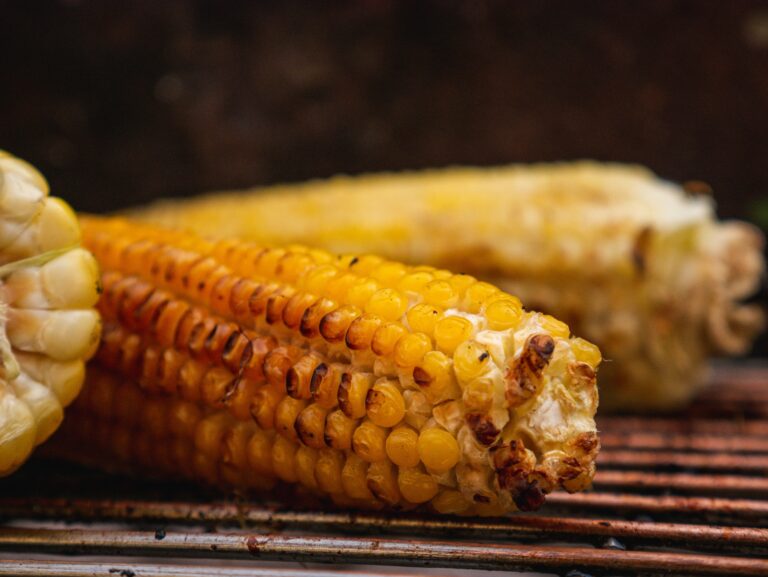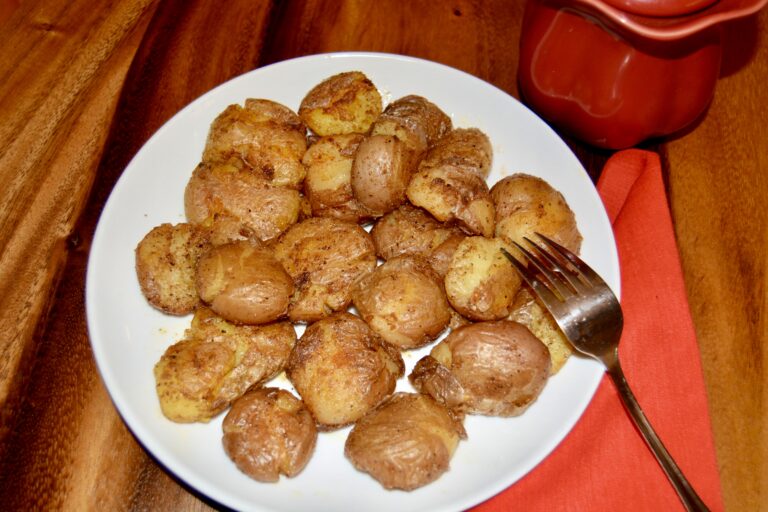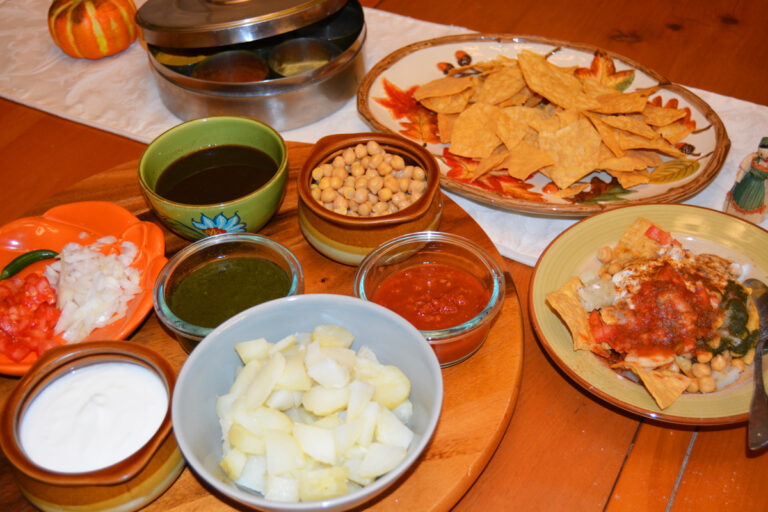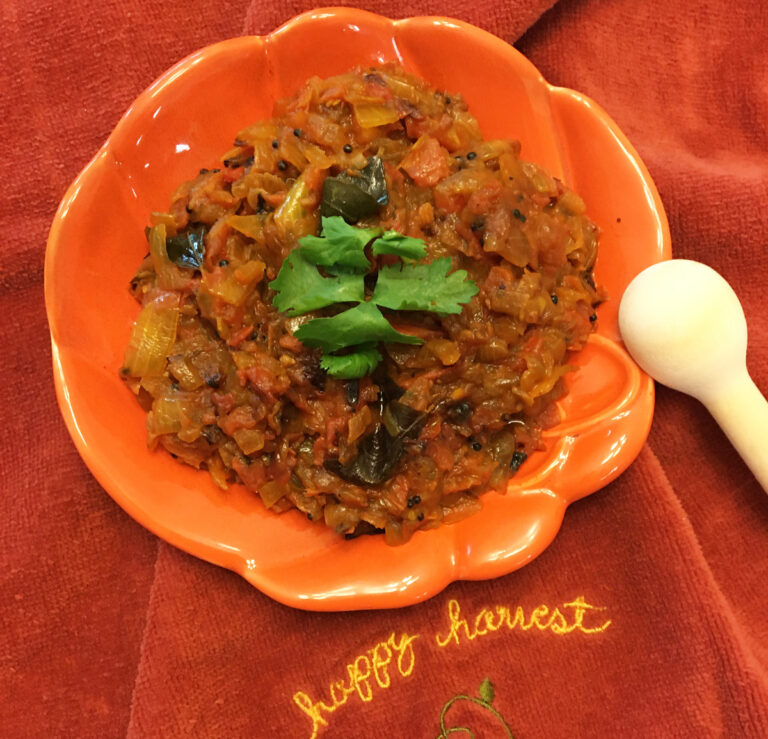The evening air is a little chilly as we head into the early days of winter. Our son is busy playing outside with the neighbor’s kids. My cook walks in from her quarters at the back of the house, ready to fix evening tea. My husband is a little late, so I tell her not to worry, I will take care of it, and she can come to fix the rotis (phulkas and chappatis) for dinner. I open the refrigerator to take out the milk for chai and notice a cup of cooked basmati sitting in the back of the refrigerator from two days ago. Ever one to recycle food before it gets bad, I decide to fix kheer for dessert. I have enough milk, and there is a cup of clotted cream that I have been gathering these past few days.
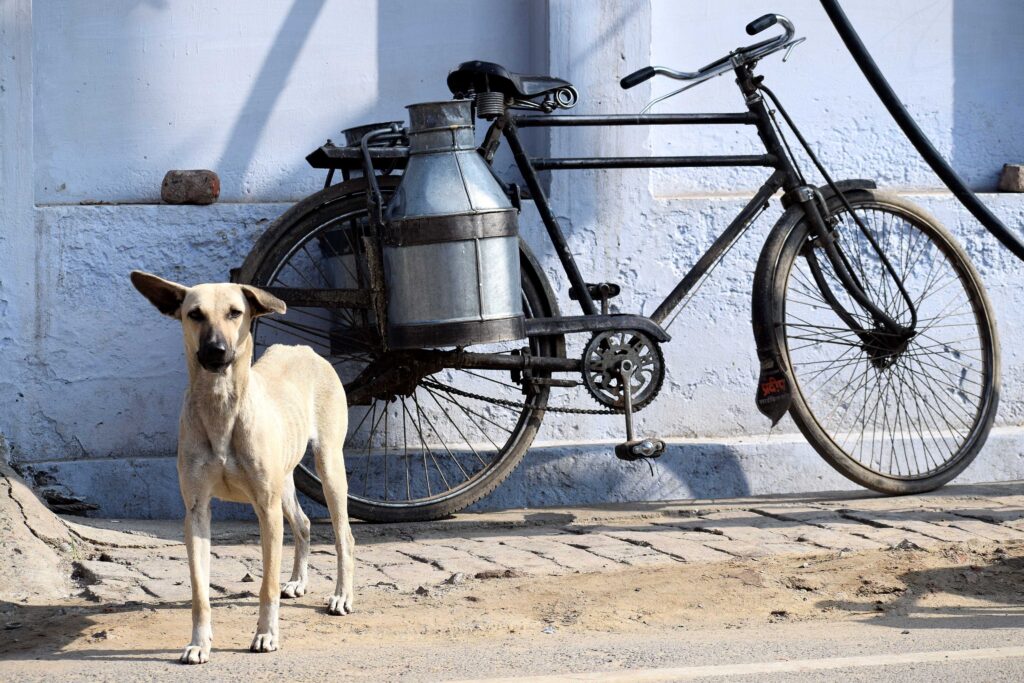 The milk is delivered from the local doodhwala (milkman), who rides in on his bike with two huge milk cans of fresh milk tethered to either side of the metal back seat. It always amazes me how he manages to balance those heavy-laden cans that are strapped to his bicycle. He arrives diligently twice a day, morning and evening, ringing his bicycle bell loud and clear to announce his arrival. He dips a measured ladle with a large handle into the can and pours the milk into the dekchi (a flat-bottomed cooking pot) held out to him. Since it is not pasteurized, the milk has to be boiled.
The milk is delivered from the local doodhwala (milkman), who rides in on his bike with two huge milk cans of fresh milk tethered to either side of the metal back seat. It always amazes me how he manages to balance those heavy-laden cans that are strapped to his bicycle. He arrives diligently twice a day, morning and evening, ringing his bicycle bell loud and clear to announce his arrival. He dips a measured ladle with a large handle into the can and pours the milk into the dekchi (a flat-bottomed cooking pot) held out to him. Since it is not pasteurized, the milk has to be boiled.
After I pasteurize the milk, and once it has cooled completely, I gather the thick layer of cream that forms on top (clotted cream). I use the cream in desserts, churn it into homemade butter, or convert the butter into desi ghee (clarified butter). One of my favorite ways to have the cream is to whip it until it is smooth and then add a large dollop to my cup of coffee (with milk and sugar, of course!). I also like to mix it with jam and slather it over a slice of bread. We can buy the “machine milk,” as the factory-pasteurized, store-bought milk is called, but there is nothing like fresh milk!
Rice Kheer is a very easy-to-make rice pudding, but it is tedious as you have to stay around the stove and stir the kheer often. Since it is my day off, I have nothing else to occupy my time, so I move into the kitchen and start on the rice kheer. With luck, it should be ready before my husband arrives!

Rice Kheer (Rice Pudding)
Ingredients
- 1 cup cooked rice
- 2 cups whole milk
- ½ cup clotted cream (or ¾ cup half & half)
- ½ cup sugar
- ½ tsp crushed cardamom
- 1 tbsp golden raisins (optional)
- 2 tbsp sliced or slivered blanched almonds (or cashew nuts if you prefer)
- 1 tsp rose water (optional)
- 10 blanched whole almonds or pistachios (for garnish)
Instructions
- In a large, heavy-bottomed pan, pour in the milk, sugar, and cooked rice. Place over medium heat and bring to a boil.
- Reduce heat and simmer for 15 minutes, stirring often. Make sure the milk and rice are not sticking to the bottom of the pan.
- Now add the cardamom, raisins, almonds, and clotted cream.
- Continue cooking on low, stirring frequently, until the kheer thickens and the rice is creamy.
- Do a taste test – if you want to add more cardamom or sugar, you can do so.
- Pour into a serving bowl, stir in rose water if you would like, and garnish with nuts. Serve warm or chilled.
Notes
Milkman Photo by Phil DuFrene on Unsplash
A bright, shining sun warms up a cold winter’s day. My husband and I are up on the fourth floor of the multi storied building that houses the service officers. We are out on the balcony, soaking up the sun. Our son is busy playing cricket with his friends in the park below. I hear the kitchen backdoor bang. Rosy, our cook and general housekeeper, has made her entrance known. Depending on the loudness of the bang, I can tell if she has had a fight with her husband or not! They live in the living quarters attached to the flat, and she always goes on about him, with just cause I might add. I head to the kitchen to supervise the cooking. It is cold, and I turn on the electric heater to warm the kitchen up. (No central heating and air-conditioning, for sure!)
For today’s lunch menu, I have decided on Sambar Dal and rice. The spicy, tangy lentil soup is a good way to take the chill off the day.
Sambar Dal is a part of South Indian cuisine and is made from pigeon peas (toor dal, also known as arhar dal). The mouth-watering dish is carefully seasoned with special spices combined to make the sambar masala powder. Vegetables and tamarind sauce are added to complete the dish. It is mainly eaten with plain boiled rice, idli, or dosa.
Growing up in India, Sambar Dal was a Saturday fixture for lunch, served with rice, pickle, yogurt, and papads. Once our tummies were filled, we had no complaints about taking Mama’s insisted-upon afternoon nap. The kids who demurred were given the task of massaging Mama’s feet while she rested. Needless to say, there were very few times when any of us elected to skip the nap. With seven kids and Dad away on military assignments, Mama had to keep a tight rein on us!
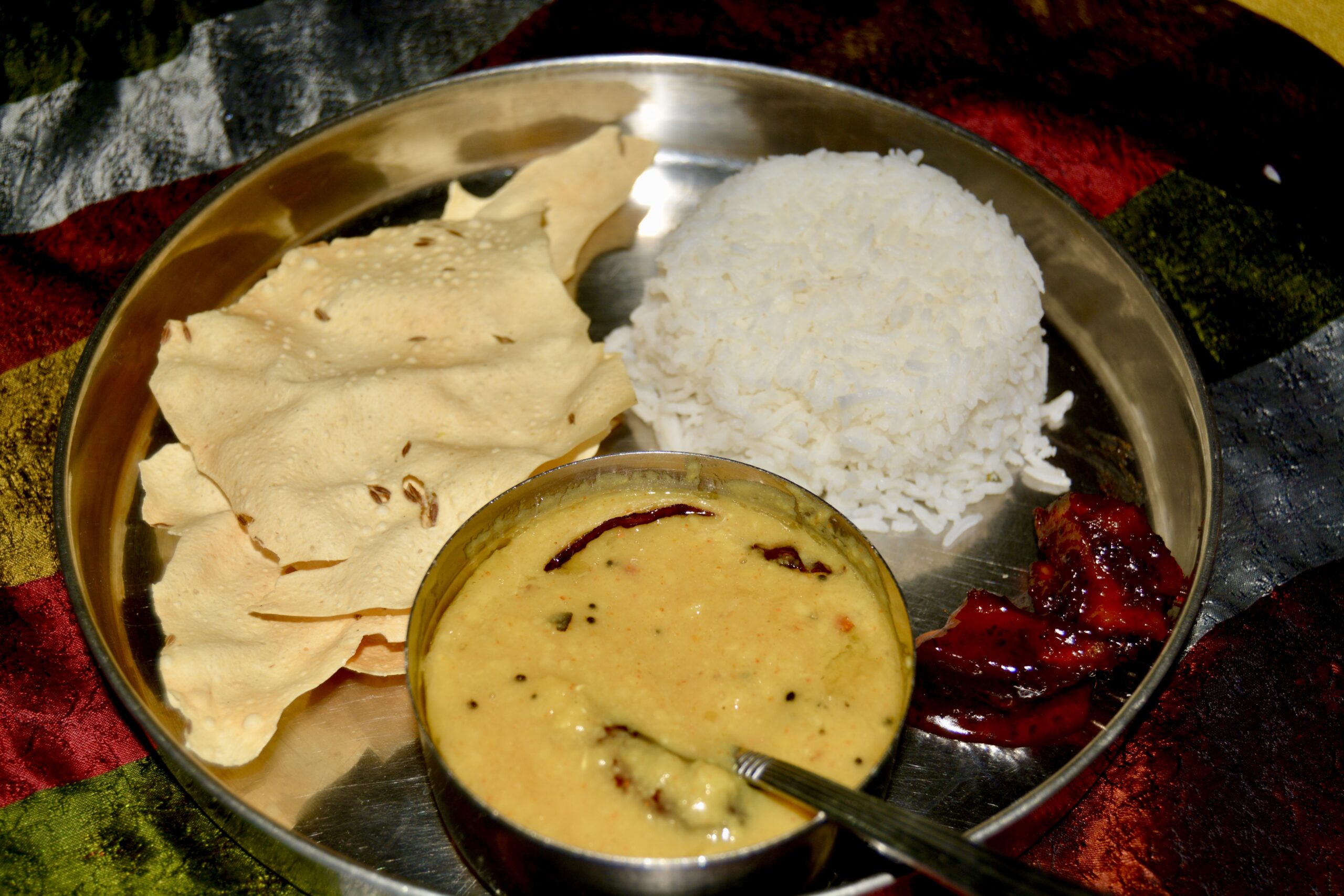
Sambar Dal (Spicy Pigeon Pea Lentil Soup)
Ingredients
- 2 cups Arhar / Toor Dal (Yellow Split Pigeon Peas) (Cleaned, rinsed several times, and soaked for30 minutes. Not necessary to soak if you are using a pressure cooker, or, if you don't mind, cooking it longer on the stove. )
- 1 tsp (level) tumeric
- 1 ½ tsps Salt (or to your taste)
- 6 cups water (add more if consistency is too thick)
- 2 cups hot water (on standby)
- 1-2 tsps Sambar masala powder (to taste, more if you prefer very spicy food) (found in Indian grocery stores)
- 2 tsps coriander powder
- - Dash chili powder (to taste)
- ½ sliced yellow onion
- 4-6 oz sliced beans or drumsticks (drumsticks are found at any Indian grocery store)
- 1 tsp tamarind paste
- ⅛ tsp asafetida
Tadka (Tempering)
- ½ tsp mustard seeds
- 8-10 fresh curry leaves
- 1 ½ tsps cooking oil (can use any healthy vegetable oil—coconut oil or olive oil)
- 1 dry red chili, halved (add more if you like it spicier)
- pinch asafetida (optional, hing or heeng in Hindi )
- ½ tsp dry urd dal (optional)
Instructions
- Ina 6 quart pot or Dutch oven, on medium heat, partially cover and boil the lentils with the turmeric and salt till almost tender (approximately 30 minutes).
- Add the Sambar masala powder (careful as it packs some heat) and the coriander, and chili powder.
- Lower the heat and let simmer for 5 minutes.
- Add sliced onions and continue to simmer covered for another 5 minutes.
- If you would like to add beans, 4-6 oz, or a cup of drumsticks, you could do so at this point and simmer until the vegetables are nearly done.
- Now add a tablespoon of tamarind paste and continue to simmer for another 10 minutes until the dal is fully cooked, and the grains blended.
- Check for tanginess, as the tartness of tamarind varies depending on the brand name you use. If you want more of a tang, then add a little more tamarind at a time till it hits your taste buds!
- If you find the dal is getting too thick anytime during the cooking process, you can thin it down with hot water. Remember, you want a nice texture to the dal, not runny. Set aside.
Tempering
- Heat oil in a sauté pan over medium heat.
- Add asafetida powder and mustard seeds in quick succession. Stir 30 seconds.
- Add the chilies, curry leaves, and urd dal.
- When the dal starts to turn light brown, 30 seconds, remove from heat and pour into the Sambar dal.
- Put the lid on and let sit 5 minutes to absorb the flavors of the tempering.
Notes
One of my favorite ways of eating corn!
Let me take that back, actually, this is tops in my book for eating corn.
I prefer the taste of it when it’s cooked on a charcoal grill, but I have also prepared it on a gas grill.
Back in India, we usually have vendors go around in their wooden carts with a small, homemade clay grill and a bunch of corn with husks stacked on the top of it. Whenever anyone wants to buy the corn, the low embers of coal are topped with more coal in the homemade clay or iron basin used as the grill. Some vendors even use a cut-out square of iron mesh on top to separate the corn from the embers. The husk and any corn silk is stripped from the cob. Using a piece of cardboard, the vendor fans the flames with one hand, while carefully rotating the corn to ensure that it’s cooked evenly. He then cuts a lime or lemon in half and rubs it all over the cob. A mixture of salt, pepper, red pepper, and sometimes black salt is then sprinkled on top and lightly rubbed in with the cut lime or lemon.
Yummy!
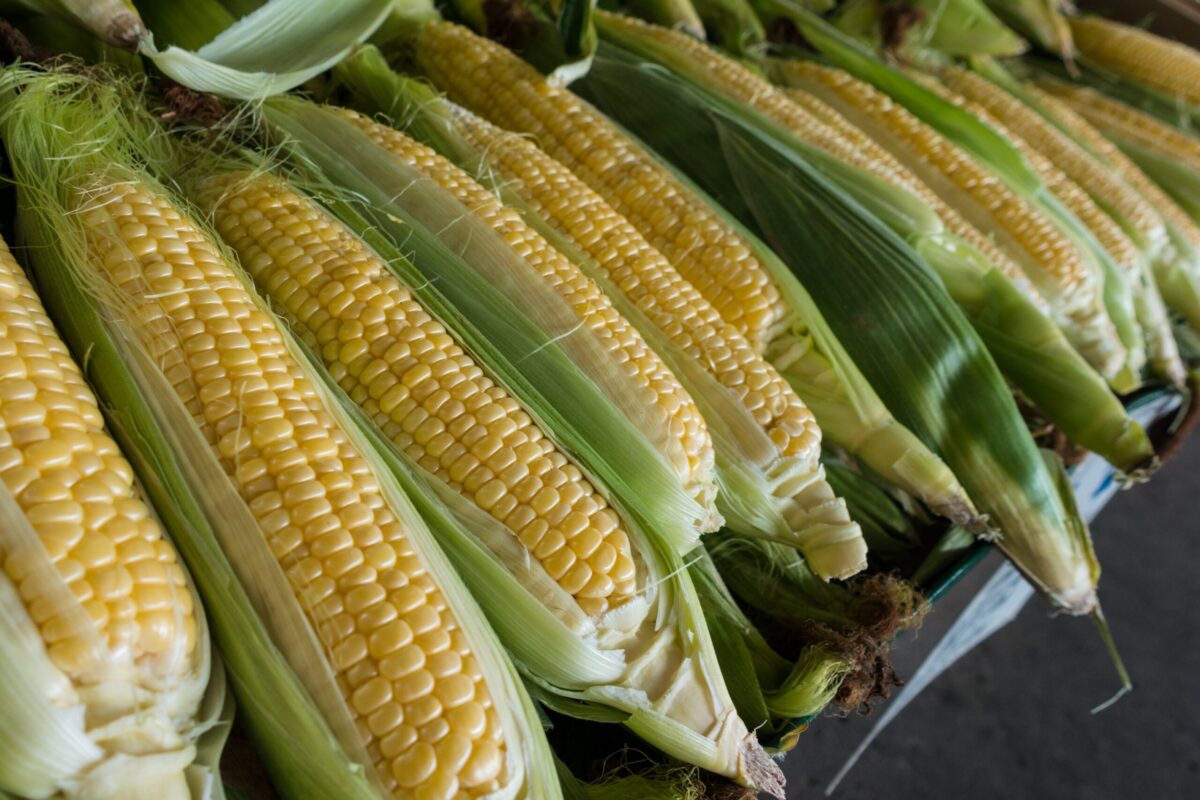
Corn on the Cob - Indian Style
Equipment
- 1 barbecue grill
Ingredients
- 8 cobs corn
- 1 lemon or lime (cut in half)
- salt, red chili powder, and pepper (to your taste)
Instructions
- Shuck the corn (use only fresh, not frozen), and place the cleaned corn on top of the grill over medium heat.
- Let the cobs sit until you hear the corn start to pop, about 8-10 minutes. With BBQ tongs, keep rotating the cobs. It chars a bit. The whole process should take less than 10 minutes. It takes longer if you're using a gas grill.
- Now rub half cut lime or lemon all over the corn.
- In a bowl, put a mixture of salt and pepper and some paprika or cayenne powder, if you like it spicy.
- Dip the flat end of the lime in the mixture and rub it over the corn. The smoky flavor of the grilled corn combined with the tangy lime and spices is delicious.
- If you do not like lime, then top it with butter and sprinkle the corn with salt and pepper and enjoy!
Notes
Thank you for the beautiful photos:
Photo by Robert Krčmar on Unsplash
Photo by Andre Ouellet on Unsplash
I have a bunch of small white potatoes that have been sitting in the bin for a while. I decide to use them before they start to sprout! I recall my mother-in-law used to make a dish out of taro root (arbi), a root vegetable. The ones she used were similar in size to the potatoes. I decided to try the recipe out on these potatoes. They are tangy and spicy.
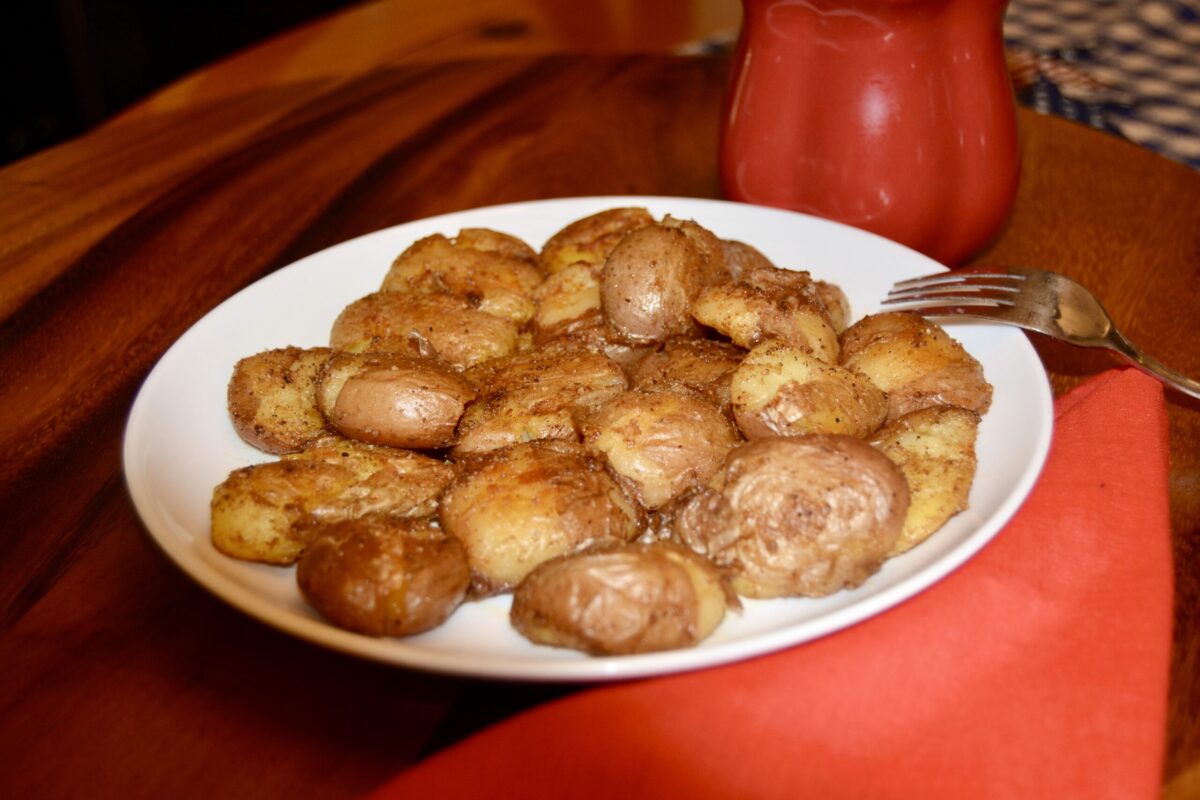
Spicy Smashed Masala Potatoes
Ingredients
- 1 lb small red or white potatoes (about 14-16, depending on size)
- ½ tsp turmeric powder
- 1 tsp cumin powder
- ½ tsp chili powder (or to your taste)
- 1 tsp amchur (mango) powder (you can find this at your local Indian grocery store)
- ¼ tsp garam masala
- 1 tsp salt (or to your taste)
- 3 tbsp oil (for frying)
- 1 pinch chaat masala or red chili (or Tajin Mexican spice)
Instructions
- Scrub the potatoes and put them in a medium-sized pot. Cover with about 2 inches of water and bring to a boil on medium heat.
- Cook until tender but firm. Drain and set aside until cool enough to handle. Do not peel the potatoes. Pat dry and drizzle a teaspoon of oil over the potatoes. Gently coat each potato with the oil.
- Place each potato on a clean flat surface and gently press down on the potato until they flatten out. They will split a bit, but if you do it gently, they will not split apart.
- Mix the powdered spices together. Coat each potato with the spice powder.
- Heat oil in a skillet or frying pan on medium heat. Add the potatoes one by one but do not crowd them into the pan.
- Fry the potatoes for 2-3 minutes on each side until lightly brown and crisp.
- Drain on paper towels.
- Transfer to a serving platter and squeeze the juice of half a lemon over the potatoes.
- Follow it up with a sprinkling of chaat masala or red chili powder. Alternatively, you can sprinkle some Mexican Tajin chili and lemon powder.
- Good as a side for a meal or a snack at teatime or having cocktails!
Notes
Living in California and getting to taste Mexican cuisine, it struck me how similar some of their spices were to Indian cuisine. Their tortillas are similar to our roti (chapati, phulka). The wheat tortillas are my favorite go-to when I don’t feel like making rotis—which is pretty often!
The taco chips are almost like papads and papdi. It didn’t take me long to start a fusion of the two cuisines. One such creation is papdi chaat made with corn chips. Papdis are little round deep fried discs of flour that are topped with several ingredients. Chaat is a North Indian street food snack, but it is substantial enough to be a meal.
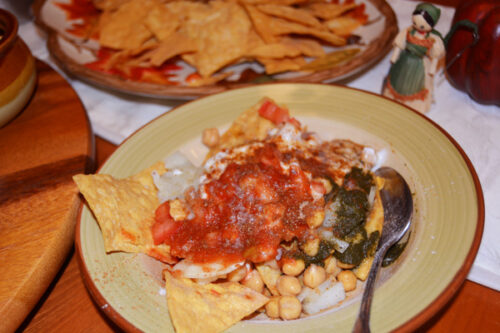
Corn Chip Papdi Chaat
Ingredients
- 2 cups potatoes boiled, peeled, and chopped (The cook time to boil the potatoes is approximately 30 minutes. )
- 2 cups chickpeas, boiled (45 mins to boil chickpeas (if soaked overnight or boil with salt until cooked). )
- 2 cups restaurant-style corn chips (yellow or white)
- 1 cup tamarind chutney
- 1 cup chunky salsa or salsa verde
- 2 tbsps roasted cumin powder
- 2 tbsps chaat masala
- 1 tbsp chili powder ((optional))
- 2 tbsps black salt
- 2 tbsps fresh cilantro (chopped)
Instructions
- In four individual bowls, divide the corn chips.
- Now top the corn chips with boiled potatoes, chickpeas, and sour cream, as desired.
- Add two tablespoons of tamarind chutney and salsa over the sour cream.
- Sprinkle with black salt, roasted cumin, chili powder, and chaat masala to your taste. Garnish with chopped fresh cilantro. Your chaat is now ready to eat!
Notes
I am up early and walk out into the backyard with my cup of tea. The blue jay who thinks he owns my yard starts his cheeping! I walk around to my vegetable plot. Tomatoes are abundant. I recall the tomato chutney Mom used to have our cook fix to go with eggs and parathas during weekends or on vacation. I head back indoors to get a basket to pick my tomatoes. My breakfast menu dilemma is resolved!
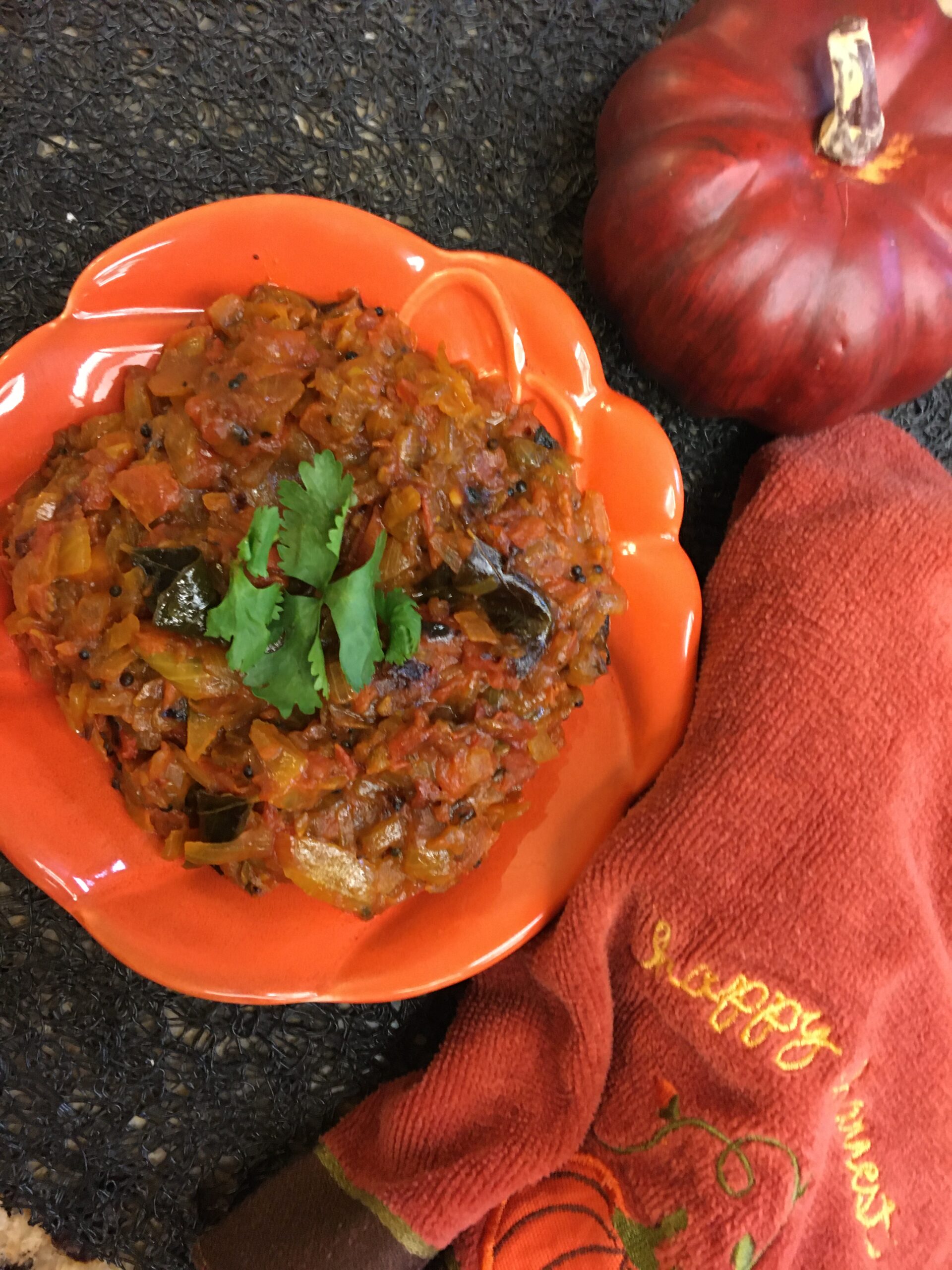
Tomato Chutney
Ingredients
- 1 lb tomatoes (diced)
- 5-6 curry leaves ((optional))
- 1-2 green chilies, sliced in half ((use according to your taste for spiciness))
- ¼ tsp mustard seeds
- 3-4 oz onions - Approximately, 1 medium peeled, sliced, or chopped ((I slice them thin, and then cut them across in half, so I don't have the long strands of onion. Your preference!))
- 1 tsp salt ((or to your taste))
- ¼ tsp tumeric
- ¼ tsp red chili powder ((optional))
- 2 tbsps finely chopped cilantro
- 2-3 tbsps cooking oil
Instructions
- Heat oil in a deep saucepan on medium heat.
- Add mustard seeds, when spluttering stops, less than 30 seconds.
- Add curry leaves, stir till they turn slightly dark, 30 seconds.
- Add green chilies and onions. Do this in quick succession as you do not want to burn the mustard seeds.
- Cook onions for about 4-5 minutes till onions turn translucent and start to brown at the edges.
- Add the turmeric and red chili powder.
- Stir about 4 times and then add the tomatoes.
- Cook till tomatoes start to curl, and the oil starts to surface on the sides. About 10-15 minutes.
- Garnish with chopped green coriander.

